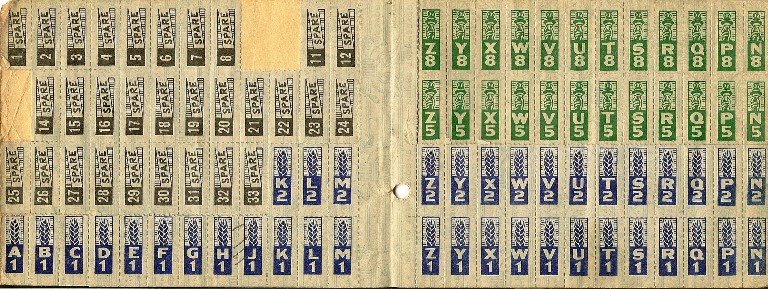A prominent method of conservation that changed the lives of many Americans was the rationing system. In 1942, the federal government launched the Food Rationing Program to sufficiently meet the supply and demand. As an unprecedented type of modern warfare, World War II consumed so much of the American economy that the country was suffering to balance the right allocation of resources between the military and the civilians. As a result, the civilians were asked to compromise on their food consumption to have enough to send overseas to our soldiers. This prevented public anger and the rich from gathering all the commodities. Families were given a War Ration Book that contained stamps, signifying the amount of goods they could receive. More specifically, canned foods were untouchable by civilians because they were saved for overseas soldiers. Imported foods like coffee and sugar were restricted due to restrictions on fuel.

Restricting fuel consumption was crucial to the war effort. Without gasoline, tanks, ships, and airplanes could not journey for miles to the European battlefield. To minimize how much each family could consume, they lowered the speed limit down to 35 mph. A new idea called the "ABC of saving gas" was born. "A" holders were limited to 3 gallons of gas a week. "B" holders had critical war occupations such as industrial jobs so they were allowed more gas but often carpooled with other workers. "C" holders received extra allocations because their jobs were the highest in society (doctors, clergies).

Through the rationing system, American citizens conserved commodities, leisure products, and necessary products like fuel. This reflected the patriotic attitude of wanting to do something to propel the war effort, while their boys were off fighting overseas. We can also see that a lot of the products that required conservation were interconnected; without gasoline, food, clothes, and weapons could not be transported to military stations and therefore, fuel consumption needed to be cut down. Although citizens obviously could not predict the victorious outcome of World War II then, we can see from hindsight now that these civilian home front contributions were more than essential.
Sources:
http://www.u-s-history.com/pages/h1674.html
http://www.nationalww2museum.org/learn/education/for-teachers/primary-sources/rationing.html?referrer=https://www.google.com/
https://envisioningtheamericandream.com/2012/11/15/gas-rationing-wwii/
This is an interesting post taking an in depth look at one of the major actions taken place in America. As we learned in class and from your post, rationing was key to the American war effort as it kept supplies available as well as costs low. I like how you went into specific topics of rationing such as the ABC gas laws, explaining them with great detail.
ReplyDeleteI found this post fascinating! You went thoroughly into depth not just about material conservation methods in WWII, but also the American public's reactions to these new policies. The fact that speed limits went down due to the war makes a lot of sense- I found that fact particularly interesting. How much did war ration stamps cost? How did this affected local businesses?
ReplyDelete